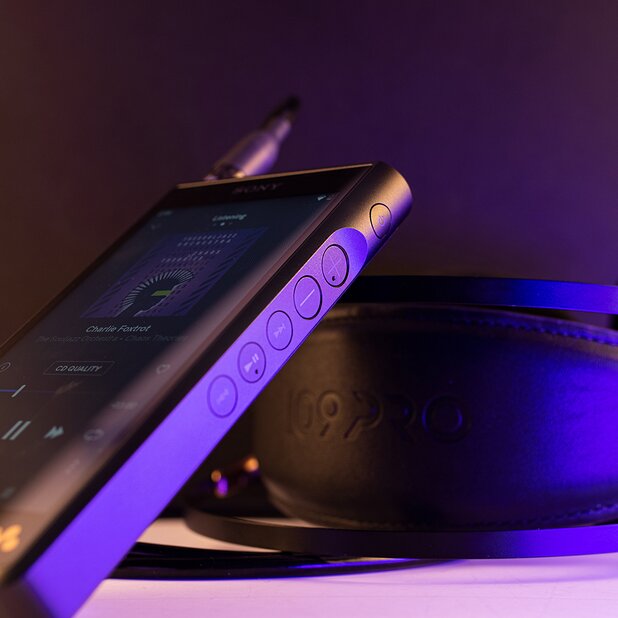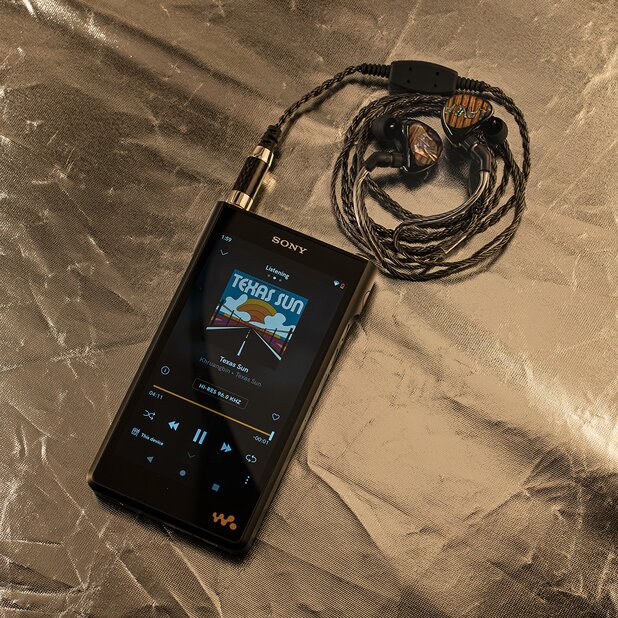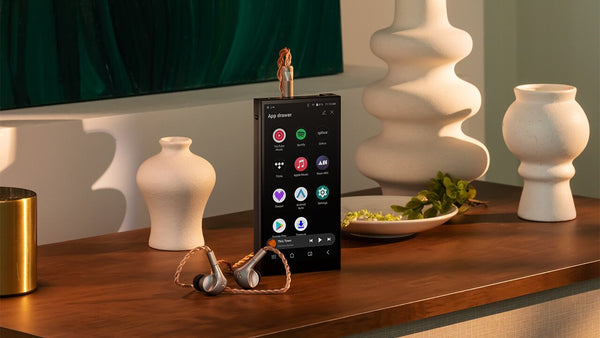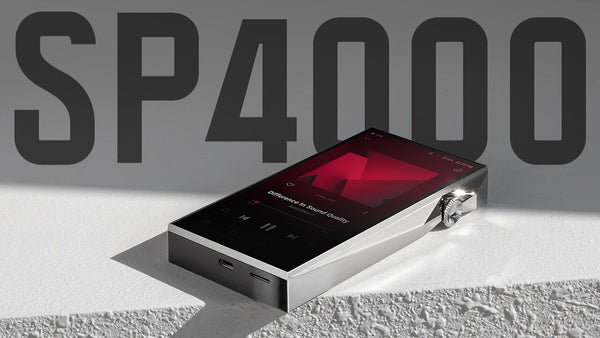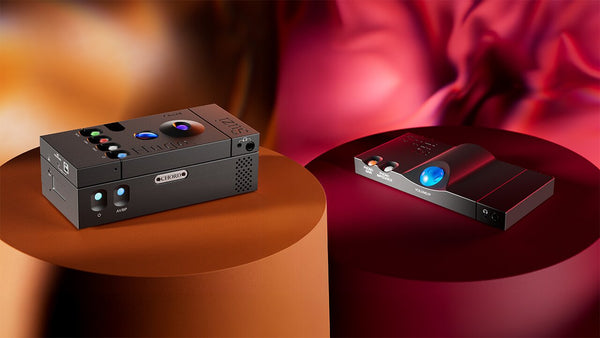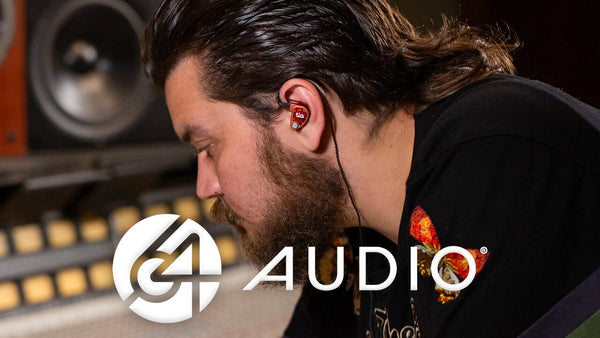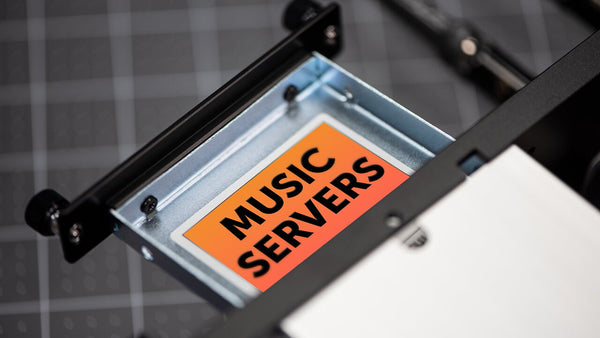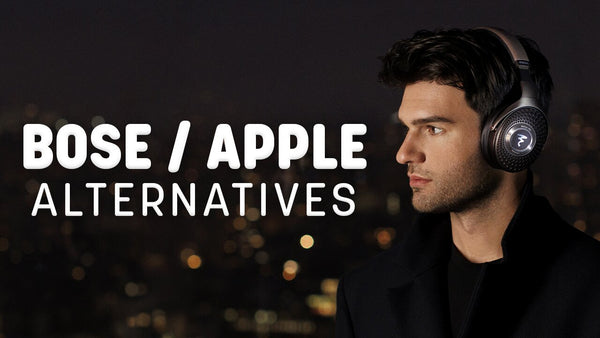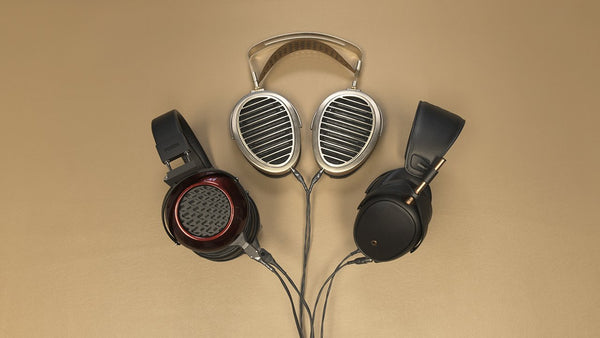Sony NW-WM1AM2 Walkman Music Player Review
Read Time: Approx. 15 min.

Sony NW-WM1AM2 Shows Off Big Improvements
Nothing disappoints like supply chain issues getting in the way of a much-anticipated product release. Unfortunately, many people are waiting for delivery of two second-generation Sony Walkmans, NW-WM1AM2 and the NW-WM1ZM2. But rest assured the wait will be worth it, as Sony has made wonderful updates to both models. I'll be talking about the WM1AM2, the less expensive model, in this review.
If you've already ordered the WM1AM2 and are waiting, hang in there. And if you're not sure if it's worth the upgrade over the original, I'm here to help you decide. Hint: If the addition of Wi-Fi and Android, an upgraded power supply, and improved ergonomics pique your interest, then this upgraded digital audio player may be for you!
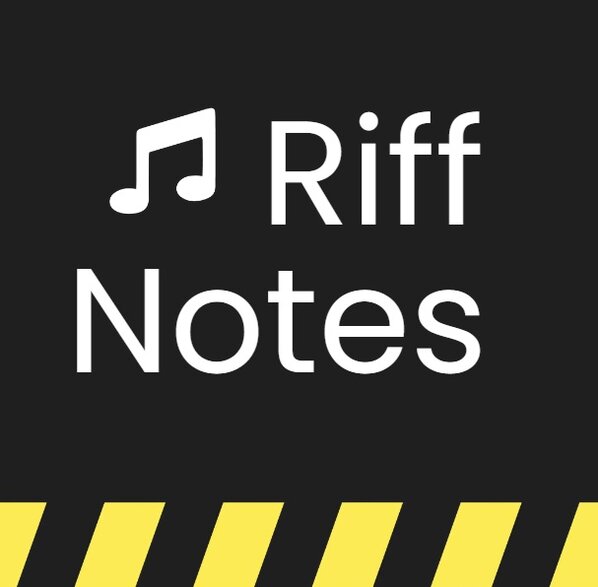
PROS
- Addition of Wi-Fi & Android
- Excellent Battery Life
- Ergonomic Improvements
- Warm, Natural Sound
CONS
- Case Not Included
Design
The WM1AM2 has a sleek and streamlined look. The aluminum alloy frame is black, with a small gold "W" Walkman logo on the bottom right. On the top are a gold-plated 4.4mm balanced port and a 3.5mm single-ended port. Sony provides rubber caps for the jacks when they're not in use. The left side of the player features a hold switch, which when activated will prevent unintentional pressing of buttons while the player is in your pocket or bag. The hold switch has a new shape - elongated vs. round - which makes it easier to control. There's also a microSD card slot (this was on the bottom of the player in the first generation WM1A). On the button is your USB port. It's USB 3.2 Gen 1, upgraded from USB 2.0. The touch screen size and resolution have been upgraded to 5 inches and HD (1280 x 720).
On the right side of the player are the power button, volume controls, and playback controls. Sony put the power button higher on this version, where the body juts out a little, to allow for easier one-handed control. I never used the original WM1A, but I understand this was a welcome change. Well, that's if you're right-handed. I'm a lefty, so it's a little trickier. But that's true for just about anything. But I can absolutely recognize that it's easier than the first-generation WM1Z.
The WM1AM2 is nominally bigger and heavier than the first generation. It's about the width of my iPhone 10, though just a little bit taller and deeper. It weighs 10.5 ounces. It's a rounded design, with no sharp edges. Very smooth, sleek, and solid.
Inside, an OFC milled block covers the digital block. This helps to strengthen digital ground and improve noise shielding from digital block elements such as the application processor and memory devices. Newly developed reflow solder containing gold is used across the circuit board surface. Sony says this leads to improved localization and a wider sound space.
The power supply of the amplifier circuit has been upgraded to the new custom-made polymer capacitor FT CAP3. Impact: improve sound expression and create a smoother sound, wider sound space, more transparency, wider bass.
While I can't speak in depth about the impact of these materials, I can say it is clear that Sony invests a lot of time and research into optimizing sound through the thoughtful selection of materials.
Sound
I tested the NW-WM1AM2 with the Empire Ears Hero IEMs and the Meze 109 Pro headphones.
Sony knows how to make my ears happy, that's for sure. I've always gravitated toward a warm-leaning sound signature, and Sony definitely does warm. But it's not the type of warm that comes at the expense of other things that make music enjoyable: detail, clarity, air. Does the WM1ZM2 have the level of resolution as the high-end NW-WM1ZM2? No, but it definitely meets it more than halfway.
Despite its warmth and richness, the WM1AM2 is not laid back or lush-sounding, nor is the bass bloated or overwhelming. There's a sense of energy, liveliness, and openness to the sound. The bass is full and well-rounded but well-controlled. Treble is sparkly yet smooth. Mids are on the forward side. There's a nice amount of headroom, with the sound feeling both wide and deep.
My two favorite types of music to listen to the WM1AM2 are classical (for the expansiveness of the sound and smoother treble) and rock (for the bass response and great dynamics).
On Vangelis' "1492: Conquest of Paradise," I enjoyed the majestic and soaring presentation. The operatic vocals sounded bold and rich, perfectly distinct against the deep bass, drums, and piano. The sound seemed to swirl around my head and out to the sides, keeping me engaged and very much immersed in the music.
Likewise, on tracks from Michael Jackson, I enjoyed the bass and energy. The drum claps that come in during the chorus of "Smooth Criminal" are plenty impactful, though not as sharp-sounding as on the more resolute Astell&Kern SP3000, for example. The background fight and all of the associated sounds (gun shot, breaking glass, vocal whoops and grunts) integrate nicely with the music, neither obscuring it or getting lost. Older rock from the Grateful Dead was also quite enjoyable on the WM1AM2, whose sound works well for that analog '60s sound. "Miles and Miles" from The Heavy Heavy, which does a retro '60s pop sound, was a real highlight.
I listen to a lot of bluegrass, and for that I prefer a more resolute sound for the strings. That being said, some of my favorite tracks sounded delicious on the WM1ZM2, with a fullness and dynamic range that made them satisfying in a different way.
Sound Adjustments
There's lots to play around with soundwise on the WM1AM2. Now, I'm not usually one to mess with the sound on my gear. I mean, I'll try different settings, but I generally return to the default sound. It was no different with the WM1AM2. I did spend some time with the new vinyl processor, as I love listening to music on vinyl. However, I found that the Vinyl Processor gave me more warmth than I desired. As for the promised replication of tone-arm resistance and surface noise, I'm not sure I noticed. That doesn't mean others won't, but I did not.
Clicking on the fourth icon at the bottom of the Walkman home screen brings you to the sound adjustment options. You will see a message: Sound adjustment is disabled. To enable it, turn off Direct Source. Once you do that (right there on the screen), you will be able to activate the Vinyl Processor as well as:

- 10 Band Equalizer
- DSEE Ultimate: Using Edge-AI (Artificial Intelligence), DSEE Ultimate™ (Digital Sound Enhancement Engine) upscales compressed digital music files in real time. And the evolving algorithm now delivers even greater benefits for CD-quality (16 bit 44.1/48kHz) lossless codec audio. Restoring acoustic subtleties and dynamic range, it provides a richer, more complete listening experience.
- DC Phase Linearizer: The DC Phase Linearizer works to effectively replicate a wide variety of sonic signatures. It applies digital-signal processing to match the phase characteristics of various types of analog amplifiers to deliver a purer, more analog-like sound. Choose from six phase character settings.
- Dynamic Normalizer: This levels the volume between all songs you play
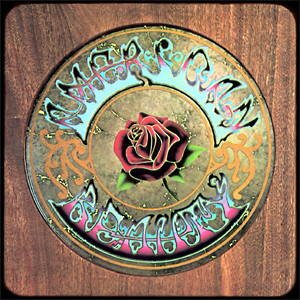
Box of Rain
By Grateful Dead
(American Beauty)
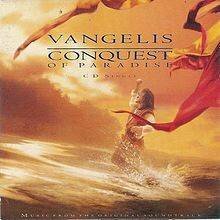
Conquest of Paradise
By Vangelis
(1492: Conquest of Paradise)
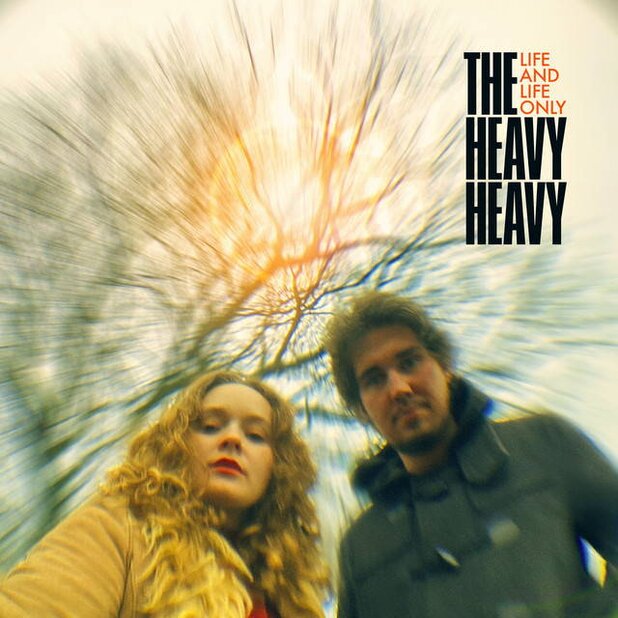
Miles and Miles
By The Heavy Heavy
(Life and Life Only)
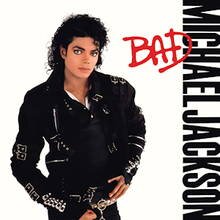
Smooth Criminal
By Michael Jackson
(Bad)
Features
- Wi-Fi
- Bluetooth 5.0
- MQA technology
- 360 Reality Audio
- Full charge in 4.5 hours
- Android 11 Operating System*
- LDAC premium wireless codec
- 5-inch HD touchscreen display
- 128GB of storage plus SD card slot
- S-Master™ HX digital amp technology
- Sony Headphones Connect App built in
- Volume UI that echoes classic analog design
- USB Type-C port compatible with USB 3.2 Gen1
- Sound enhancements including new Vinyl Processor
- Two home screens: Walkman home screen and Android home screen
- Up to 40 hours of non-stop 96kHz FLAC high-resolution audio playback
- 11.2MHz DSD native using balanced headphones and PCM 384KHz/32-bit support
- DSD Remastering Engine: PCM audio is resampled into an 11.2MHz DSD ultra-high frequency 1-bit audio stream
Like most Android devices, the NW-WM1AM2 comes pre-equipped with the Google Play Store and a host of Google-supported apps. So when you log into the Google Play Store to download, say, Tidal or Qobuz, you are automatically logged into all of your Google apps, including email. This can present a security risk, given that your device is protected by a simple passcode. You would have to go in and log out of/manually uninstall each app that you don't want. That's a pain.
To get around this, you could bypass the Google Play Store and instead manually install any APK (Android-based) apps you desire directly onto the device. This can be done through APKpure.com. You can also see this Moon Audio blog post. It was written in regard to Astell&Kern music players but is relevant for Sony as well.

The WALKMAN Home Screen is customized for music playback.
- Status bar. The status of the player and notifications appear as icons. Swipe down on the status bar to display the notification panel and the Quick Settings panel.
- Music player widget (so that you can control music playback without launching an app)
- Dock. You can set up to five apps, but you will initially see icons for these preinstalled apps:
- Guide to Quality Sound
- Sony Help Guide
- Music Player
- Sound Adjustments
- Sony Headphones Connect
- Navigation bar with back button, home button, and overview button
- Cover art - Tap this area to launch Music Player.
- Previous button / Play-Pause button / Next button: Control music playback without launching an app.

The Android home screen features widgets, shortcuts, folders, and more.
- Status bar: The status of the player and notifications appear as icons. Swipe down on the status bar to display the notification panel and the Quick Settings panel.
- Google search widget
- Shortcuts to apps
- Dock. You can add up to 5 shortcuts for apps, but the player comes preinstalled with:
- Guide to Quality Sound
- Sony Help Guide
- Music Player
- Sound Adjustments
- Sony Headphones Connect
- Navigation bar with back button, home button, and overview button
Comparisons
How does the Sony NW-WM1AM2 compare to two other DAPs in its price range, the Astell&Kern KANN Max and the iBasso DX320? Each has its own sound signature, so it's going to be a matter of preference in that regard. Keep in mind, however, that the DX320 has swappable amp cards, and the Sony has various options for adjusting the sound. After that, you have to weigh features that are important to you. Looking for the most internal storage? That's will be the Sony. Looking for the best battery life? Again, the Sony. But if you want, say, extreme customization options, that would be the DX320. For a more in-depth look, check out our KANN Max review.
Sound:
- WM1AM2: Warm and rich
- DX320: Rich, accurate
- Max: Detailed and dynamic
Superlatives:
- Lightest: DX320 (205g)
- Biggest screen: DX320 (6.5 inches)
- Most storage: WM1AM2 (128GB)
- Best battery life: WM1AM2 (40 hours)
- Shortest charge time: DX320 (2.5 hours)
- Most powerful: KANN Max
- Most customizable sound: WM1AM2 (sound adjustments); DX320 (swappable amp cards)
Dragon Cables
You have two considerations when choosing a headphone or IEM cable to use with your DAP: the sound signature of your headphones and the sound signature of your audio player. Sony DAPs are on the warmer side, which makes the Silver Dragon a good match for bringing out more detail, clarity, and top-end sizzle. If you're using a warmer IEM or headphone with the WM1A, you'll probably want to use the Silver Dragon. But if your IEMs or headphones are on the more neutral or analytical side, it's really a personal preference. The Black Dragon IEM cable uses silver-plated copper and is going to give you some added warmth as well as detail and clarity. The Bronze Dragon is a good choice for exceptionally thin-sounding headphones or IEMs, but it may be too much warmth for the WM1A. There are no right answers.
Our HiFi Audio Dragon Cables bring out more of what you love in your music and audio gear. If you love your headphones but wish they had a bit more top-end sparkle - a Silver Dragon Headphone Cable would be a great option. If your USB cables keep dying - as many stock cables do - then check out our quality USB Audio Cables. We say time and time again that materials matter, and our audio cables and custom geometries actually help to bring out those desired properties in your gear and music. We make tons of custom options for our customers so that you can get the right HiFi Audio cable for your exact needs. If you have any questions feel free to Contact Us and we'll be more than happy to help.
Verdict
There are many good DAPs on the market. Sony makes some of the best when it comes to sound and build quality. The addition of Wi-Fi on the NW-WM1AM2 makes it more competitive against models from iBasso and Astell&Kern that already had Wi-Fi. The switch to the Android OS gives you options for apps and cloud storage. With up to 40 hours of playback and improved ergonomics, the NW-WM1AM2 is an attractive option for those who enjoy the signature Sony sound: fun, musical, and bassy, but with a sense of openness and control. The WM1AM2 is great for Rock 'n' Roll and other peppy, bassy music - but it is by no means limited. For example, if you enjoy Jazz but don't want a lot of sharp edges or excess top-end energy, this is a great choice. With options for streaming, storage and sound enhancements, the WM1AM2 is a fantastic option for the modern audiophile. Got a huge music library on your computer? No problem, use our Silver Dragon Premium USB Cable to transfer all your favorite music to the WM1AM2. Is it worth upgrading if you own the first-generation NW-WMA1? Yes! The Sony NW-WM1AM2 DAP is the perfect companion for high-fidelity listening on the go.
Featured Products
Related Videos
Sony NW-WM1AM2 Walkman Digital Media Player Unboxing & Overview
How the Sony Walkman Changed Music (And Still Does)
These Flagship Music Players are the Best Money Can Buy
What's in the Box
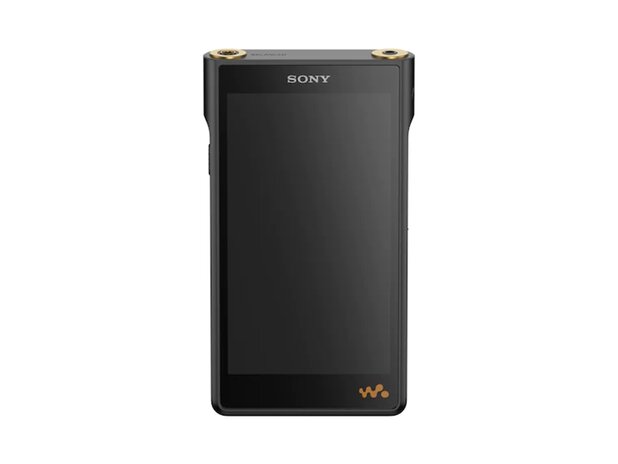
- Sony NW-WM1AM2 Walkman
- USB Type-C Cable (USB-A to USB-C)
- Operating Instructions
- Reference Guide
- Headphone Jack Cap (Stereo Mini)
- Headphone Jack Cap (Balanced Standard)
Specifications
- Size: 80.5mm x 142.5mm x 208.mm
- Weight: 299g
- Frequency band: 2.4 / 5 GHz
- Battery life - continuous playback music (with music app): MP3 (128kbps) / Stereo mini-jack: Approx. 40 hrs, MP3 (128kbps) / Balanced standard-jack: Approx. 40 hrs, FLAC (96kHz / 24bit) / Stereo mini-jack: Approx. 40 hrs, FLAC (96kHz / 24bit) / Balanced standard-jack: Approx. 40 hrs, FLAC (192kHz / 24bit) / Stereo mini-jack: Approx. 35 hrs, FLAC (192kHz / 24bit) / Balanced standard-jack: Approx. 35 hrs, DSD (2.8224MHz / 1bit) / Stereo mini-jack: Approx. 25 hrs, DSD (2.8224MHz / 1bit) / Balanced standard-jack: Approx. 15 hrs, DSD (5.6448MHz / 1bit) / Stereo mini-jack: Approx. 18 hrs
- Battery Llife - continuous music playback (other music app):
- MP3 (128kbps) / Stereo mini-jack: Approx. 18 hrs, MP3 (128kbps) / Balanced standard-jack: Approx. 18 hrs
- Memory size: 128GB (actual available memory 103GB)
- Music searching methods: All Songs,Artist,Release Year,Playlists,Album,Genre,Composer,Hi-Res,Recent Transfers,Folder,Cue sheet
- Music play mode: Shuffle Playback,Repeat Off,Repeat 1 Song,Repeat All,All Range,Selected Range
- Drag and drop: Yes
- Display resolution: 12.7 cm (5.0-inch) ,HD (1280 x 720 Pixels)
- Display type: TFT colour display with white LED-backlight
- Sound effects: Direct Source (Direct), 10 Band equalizer,DSEE Ultimate, DC Phase Linearizer, Dynamic Normalizer, Vinyl Processor
- Audio playback: MP3: 32 - 320kbps (supports VBR) / 32, 44.1, 48kHz, WMA: 32 - 192kbps (supports VBR) / 44.1kHz, FLAC: 16, 24bit / 8-384kHz, WAV: 16, 24, 32bit (Float / Integer) / 8-384kHz, AAC: 16-320kbps / 8-48kHz, HE-AAC: 32-144kbps / 8-48kHz, Apple Lossless: 16, 24bit / 8-384kHz, AIFF: 16, 24, 32bit / 8-384kHz, DSD: 1bit / 2.8MHz, 5.6MHz, 11.2MHz, APE: 8, 16, 24bit / 8-192kHz (Fast, Normal, High), MQA: Supported
- Headphone out (stereo mini-jack):
- Frequency: 20-40,000 HZ
- Maximum power output (JEITA 16Ω/MW): 60mW+60mW (High Gain)
- Headphone out (balanced standard-jack):
- Frequency: 20-40,000 Hz
- Maximum power output (JEITA 16Ω/MW): 250mW+250mW (High Gain)
- Operating system: Android 11
- Terminals: Headphone: Stereo mini jack, Balanced standard jack, External memory: Micro SD Micro SDHC Micro SDXC
- Wireless capabilities: Communication system: Bluetooth Specification Version 5.0,NFC: No,Supported Bluetooth profiles: Yes,Supported Codecs (Transmission): Yes,Supported Codecs (Reception): No
- Talkback: Yes




